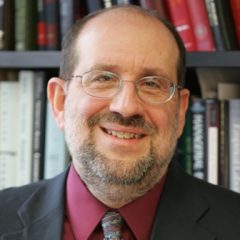(p. D8) In the early pandemic era, for instance, airborne transmission of Covid-19 was not considered likely, but in early July the World Health Organization, with mounting scientific evidence, conceded that it is a factor, especially indoors. The W.H.O. updated its priors, and changed its advice.
This is the heart of Bayesian analysis, named after Thomas Bayes, an 18th-century Presbyterian minister who did math on the side. It captures uncertainty in terms of probability: Bayes’s theorem, or rule, is a device for rationally updating your prior beliefs and uncertainties based on observed evidence.
. . .
As Marc Lipsitch, an infectious disease epidemiologist at Harvard, noted on Twitter, Bayesian reasoning comes awfully close to his working definition of rationality. “As we learn more, our beliefs should change,” Dr. Lipsitch said in an interview.
. . .
But there is little point in trying to establish fixed numbers, said Natalie Dean, an assistant professor of biostatistics at the University of Florida.
“We should be less focused on finding the single ‘truth’ and more focused on establishing a reasonable range, recognizing that the true value may vary across populations,” Dr. Dean said. “Bayesian analyses allow us to include this variability in a clear way, and then propagate this uncertainty through the model.”
. . .
Joseph Blitzstein, a statistician at Harvard, delves into the utility of Bayesian analysis in his popular course “Statistics 110: Probability.” For a primer, in lecture one, he says: “Math is the logic of certainty, and statistics is the logic of uncertainty. Everyone has uncertainty. If you have 100 percent certainty about everything, there is something wrong with you.”
By the end of lecture four, he arrives at Bayes’s theorem — his favorite theorem because it is mathematically simple yet conceptually powerful.
“Literally, the proof is just one line of algebra,” Dr. Blitzstein said. The theorem essentially reduces to a fraction; it expresses the probability P of some event A happening given the occurrence of another event B.
“Naïvely, you would think, How much could you get from that?” Dr. Blitzstein said. “It turns out to have incredibly deep consequences and to be applicable to just about every field of inquiry” — from finance and genetics to political science and historical studies. The Bayesian approach is applied in analyzing racial disparities in policing (in the assessment of officer decisions to search drivers during a traffic stop) and search-and-rescue operations (the search area narrows as new data is added). Cognitive scientists ask, ‘Is the brain Bayesian?’ Philosophers of science posit that science as a whole is a Bayesian process — as is common sense.
. . .
Even with evidence, revising beliefs isn’t easy. The scientific community struggled to update its priors about the asymptomatic transmission of Covid-19, even when evidence emerged that it is a factor and that masks are a helpful preventive measure. This arguably contributed to the world’s sluggish response to the virus.
. . .
In 1650, Oliver Cromwell, Lord Protector of the Commonwealth of England, wrote in a letter to the Church of Scotland: “I beseech you, in the bowels of Christ, think it possible you may be mistaken.”
In the Bayesian world, Cromwell’s law means you should always “keep a bit back — with a little bit of probability, a little tiny bit — for the fact that you may be wrong,” Dr. Spiegelhalter said. “Then if new evidence comes along that totally contradicts your main prior belief, you can quickly ditch what you thought before and lurch over to that new way of thinking.”
“In other words, keep an open mind,” said Dr. Spiegelhalter. “That’s a very powerful idea. And it doesn’t necessarily have to be done technically or formally; it can just be in the back of your mind as an idea. Call it ‘modeling humility.’ You may be wrong.”
For the full story, see:
(Note: ellipses added.)
(Note: the online version of the story has the same date as the print version, and has the title “How to Think Like an Epidemiologist.”)

